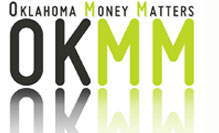Retirement Planning
Are you financially ready for retirement? You may think there’s plenty to spend money on now, like vacations, braces, mortgages, day care; why should I worry about retirement? Honestly, you can’t afford not to.
Every month that passes puts you either one step closer to financial freedom or one step behind. If retirement hasn’t been a priority until now, don’t beat yourself up. It’s never too late to save for your future. Here’s how.
Start now. Dedicate as much as you can to your retirement fund, even if it’s only $20 a week. Find ways to reduce spending and increase your savings as you free up additional funds. Aim to save at least 10 percent of your income toward retirement savings. Use this handy calculator to figure out how long your retirement savings will last.
Bank windfall money. When you earn a raise, get a refund or receive cash as a gift, put it toward your retirement. Maximize “free” money by saving it, allowing it to grow and serve you well in the future.
Go for the match. Take advantage of your employer’s 401(k) or other sponsored investment program, especially if they offer matching funds. At minimum, contribute enough to get the full company match - that’s free money!
Fund an Individual Retirement Account (IRA). In addition to maximizing your contributions to a matched savings program, make regular contributions to a traditional or Roth IRA. An IRA allows you to contribute a portion of your earned income each year.While these accounts are similar, the fundamental differences involve taxation. Contributions to a traditional IRA are taken from pretax income and may be tax deductible in the year they're contributed. Funds in a traditional IRA grow tax-deferred; the money is taxed as ordinary income when you take it out at retirement (if you follow the rules).
Contributions to a Roth IRA are taken from post-tax dollars - in other words, you've already paid taxes on the earnings - so unlike a traditional IRA, qualified withdrawals from a Roth IRA are tax free (if you follow the rules). Consult a financial planner to determine which option is right for you.
Put your security first. Don’t sacrifice your future financial security to pay for your child’s education. If you have to choose, fund your retirement first. There are numerous financial aid options available for your child, but only you can provide for a financially healthy retirement.
When investing for your retirement, keep in mind:
Risk. Risk is the chance you might lose your money - the higher the risk, the higher the potential reward. What’s your risk tolerance? Typically, the farther you are from retirement, the more time you have to recoup short-term stock market losses, so you can afford to a be a little risky. The closer you are to retirement, the more important it is to have a guaranteed return on your investment. As you age, adjust your investments to reflect the appropriate risk for your situation.
Diversification. Talk to your financial planner about the proper investment mix for your situation. Like the old proverb says, you don’t want all your eggs in one basket. Learn more about finding a financial planner (PDF).
Fees. Know the fees attached to your retirement account. Also, keep in mind, if you withdraw retirement funds early, you could face stiff penalty fees.
Did You Know?
The way retirement is funded has drastically changed. Employees used to work at the same place for years, earn a pension and retire. Today, retirement planning is primarily the responsibility of the worker. And, the average worker changes jobs about 10 times before the age of 40.



